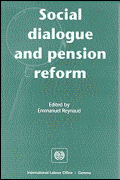Studies in this week’s Hutchins Roundup find that a decline in unintended pregnancies has driven fertility trends, pension plans have played a minor role in increasing wealth inequality, and more.
Want to receive the Hutchins Roundup as an email? Sign up here to get it in your inbox every Thursday.
Decline in unplanned pregnancies has driven fertility trends
Fertility in the United States has fallen dramatically since 2007. Using data from the National Center for Health Statistics, Kasey Buckles from the University of Notre Dame, Lucie Schmidt of Williams College, and Melanie Guldi of the University of Central Florida show that 35 percent of this fertility decline can be attributed to a reduction in unintended pregnancies. They estimate that the share of births that are unplanned has declined by 17 percent since 2006, and that the overall birth rate for women ages 15 to 19—the group most likely to have unintended births—has declined by 50 percent. In contrast, birth rates among older and married women, who are significantly more likely to have planned births, have grown steadily since the 1980s. Because unintended births are most often funded by Medicaid and other healthcare programs, reducing the number of unintended births over the last decade may have significant implications for government spending.
Demise of traditional pension plans has played a small role in increasing wealth concentration
Traditional employer-sponsored pension plans have become much less common over the last three decades, leading some to wonder whether trends in wealth inequality are driven by the decline in pension coverage. John Sabelhaus and Alice Henriques Volz of the Federal Reserve Board show that this is only partly true: The share of total pension assets (including those in both defined benefit and defined contribution plans) held by workers in the top 25 percent of the wealth distribution has increased by only 5 percent since 1989, slightly less than the overall increase in wealth concentration over the period. This implies that the decline in employer-sponsored pensions has played only a small role in increasing overall wealth inequality. Still, they show that the rate of coverage under any kind of retirement plan declined for workers in the bottom 75 percent of the wealth distribution between 1989 and 2016, but rose for those in the top 25 percent. The latter group holds almost 85 percent of all employer-sponsored pension assets. For everyone else, Social Security checks remain the most important source of income at retirement.
A new measure of inflation could help solve some economic puzzles
Inflation since the onset of the Great Recession has puzzled economists: It did not fall as much as theory predicted during the recession, and remained stubbornly low throughout the recovery. In particular, economists have wondered whether the Phillips Curve, the negative relationship between unemployment and inflation, has disappeared or weakened in the last decade. Laurence Ball of Johns Hopkins University and Sandeep Mazumder of Wake Forest University show that using a measure of median inflation across industries, rather than the Fed’s preferred measure of core inflation, might help resolve some of these mysteries. They show, for example, that while core inflation remained mysteriously low in 2017 and 2018 even while the unemployment rate declined to historic lows, median inflation actually sat slightly above 2 percent. In addition, the relationship between unemployment and inflation over the last decade, which looks weak when using the traditional core inflation measure, looks strong when the authors use their preferred median inflation measure.
Chart of the week: Shadow banking has only grown since the crisis

“The monetary response to the crisis, with negative interest rates and quantitative easing, sharpened the focus around who is responsible for financial stability, but numerous tensions are still unresolved. Since financial systems are largely determined by national features, questions arise about what should be done at the national level and what at the centralised level. Who should be responsible for the use of which kinds of instruments? […] While a stronger systemic orientation is essential if financial stability is to be assured, the definition of the problem to be solved is still blurred. Even if we can agree on a macroprudential objective, such as increased resilience of the financial system, we are still failing to measure the goal or define an operational target. Moreover, there remains a need to clarify the range of available tools, calibrate the balance between rules and discretion, and clarify governance arrangements, both nationally and internationally, as well as the potential interaction with other policy areas. Many believe that central banks are best equipped to do this job. In pursuing their goal of preserving price stability, central banks are attentive to the evolution of real and financial markets, they are familiar with the credit and banking channel and their institutional independence shields them from political interference,” says Yves Mersch, governor of the European Central Bank.
“However, as central bankers we have to perform our tasks with the utmost responsibility. Before adjusting the conceptual framework underpinning possible policy action, we need tested, robust analyses. In macroprudential policy we still lack this certainty that would allow for a macroprudential stance that is similar but different to monetary policy. We have no consensus on the definition and measurement of the objective. So how can we identify clear and well-defined policy goals linked to metrics and potential target levels? […] While modesty is advisable in the context of macroprudential ambitions, monetary policy has the more stable conceptual framework.”










Commentary
Hutchins Roundup: Unplanned pregnancies, wealth inequality, and more
February 7, 2019